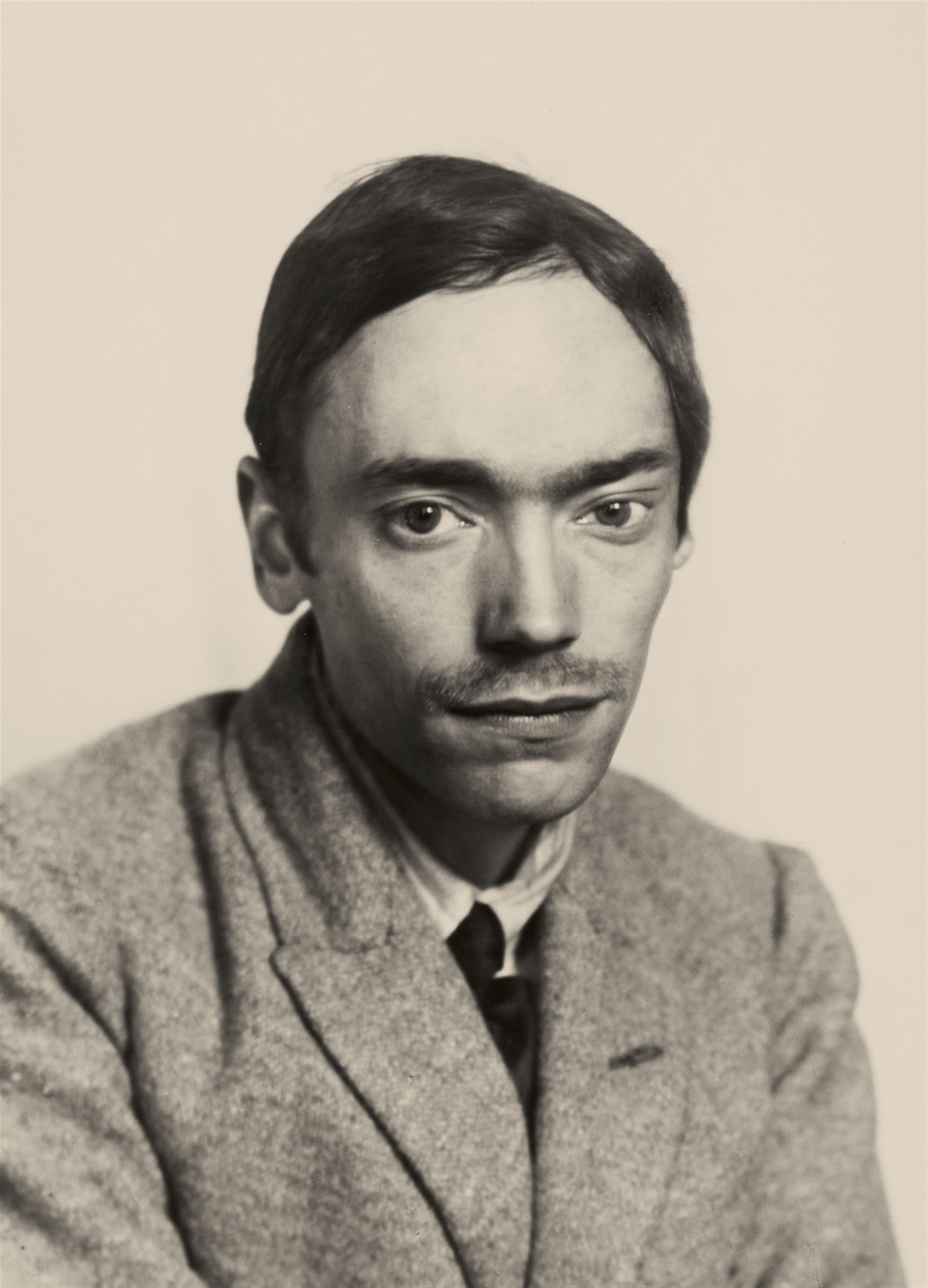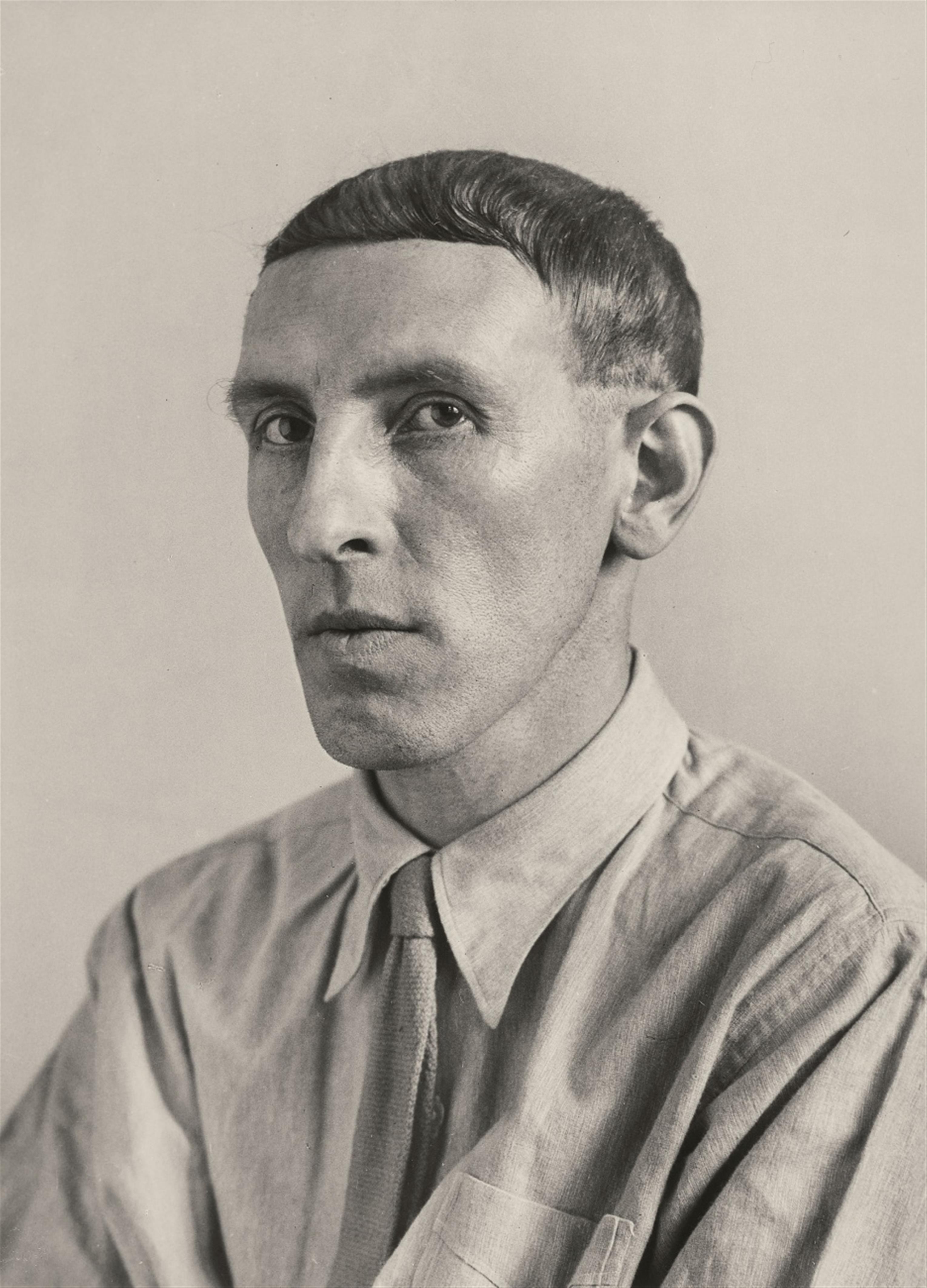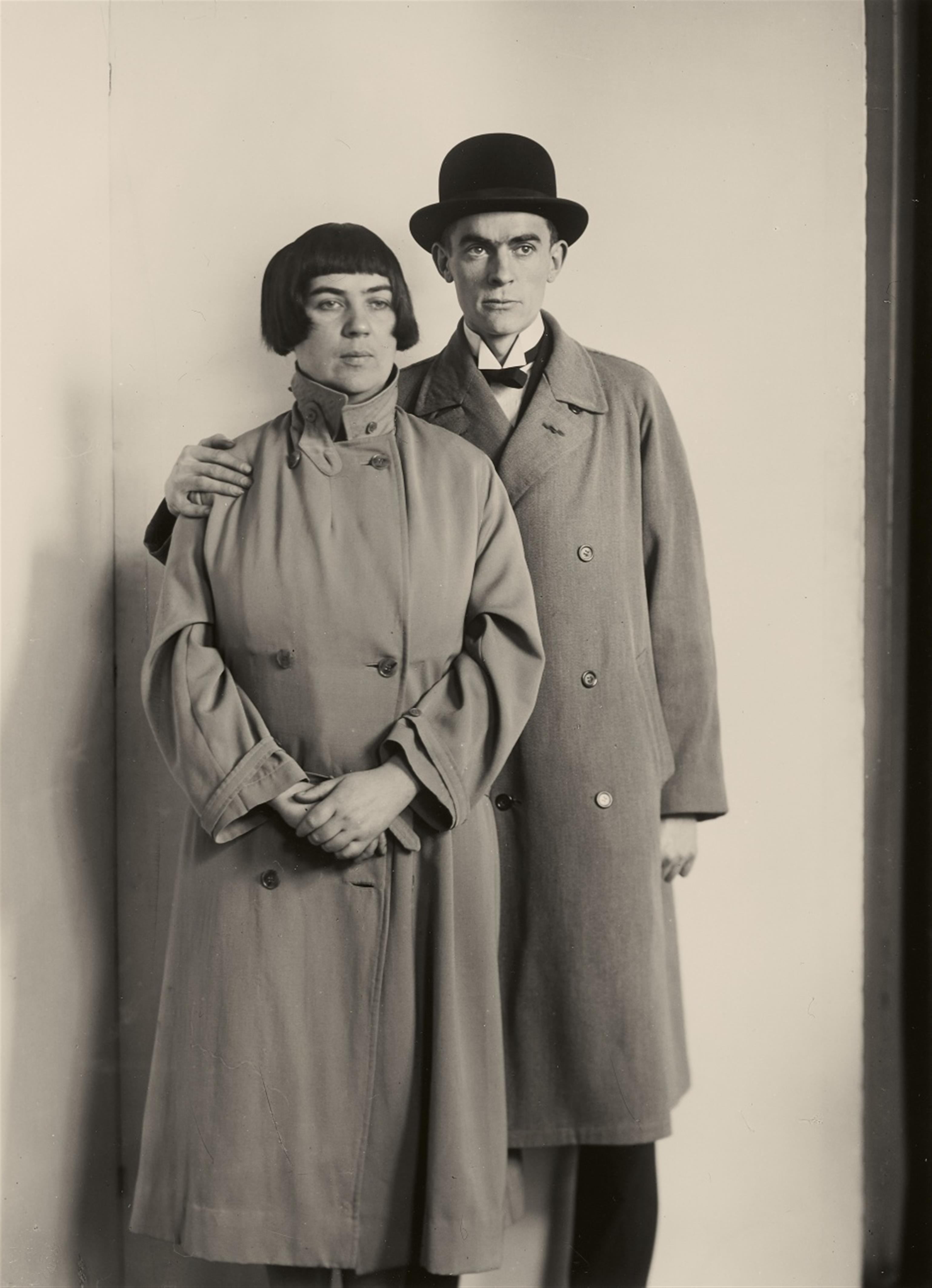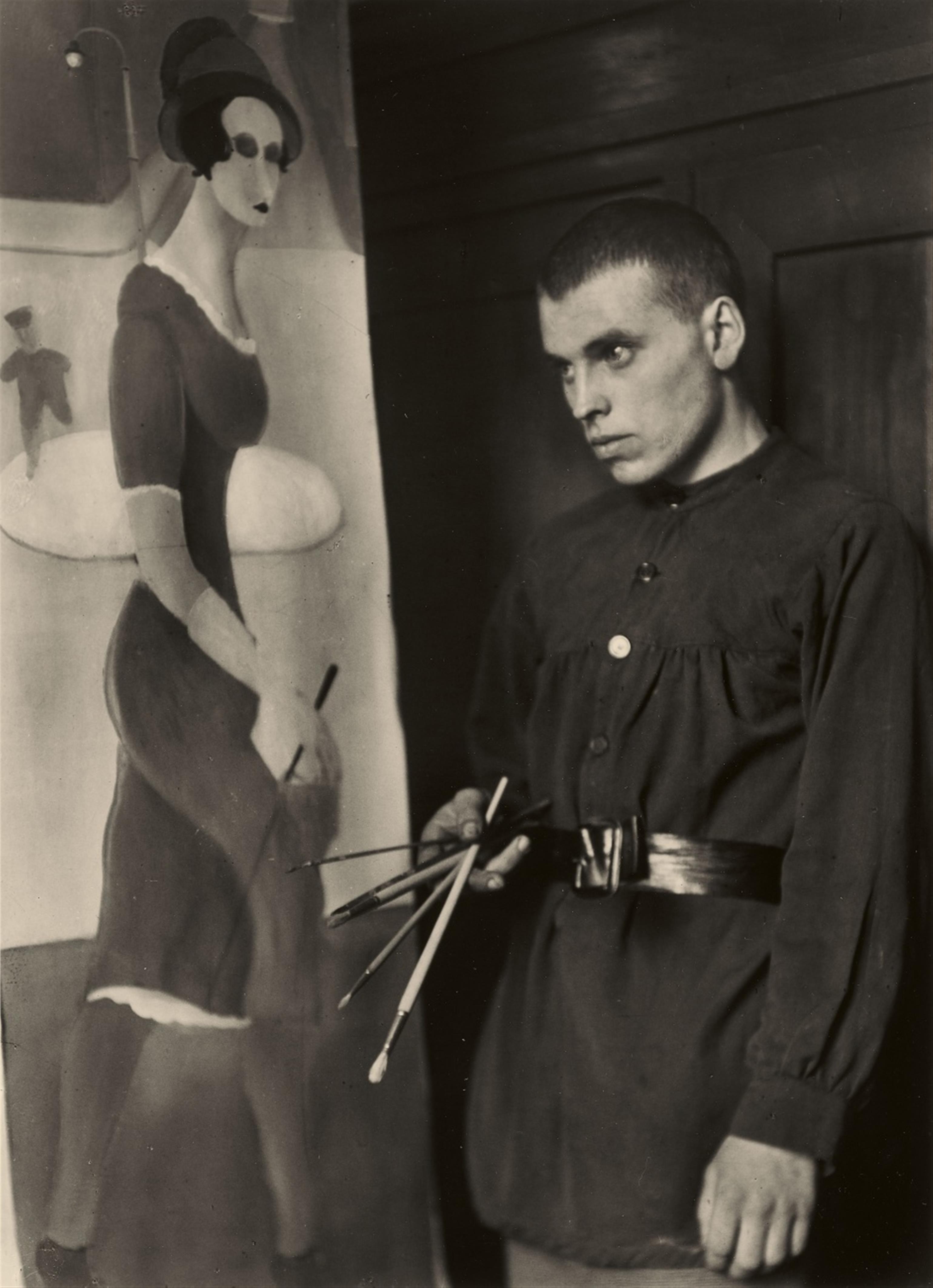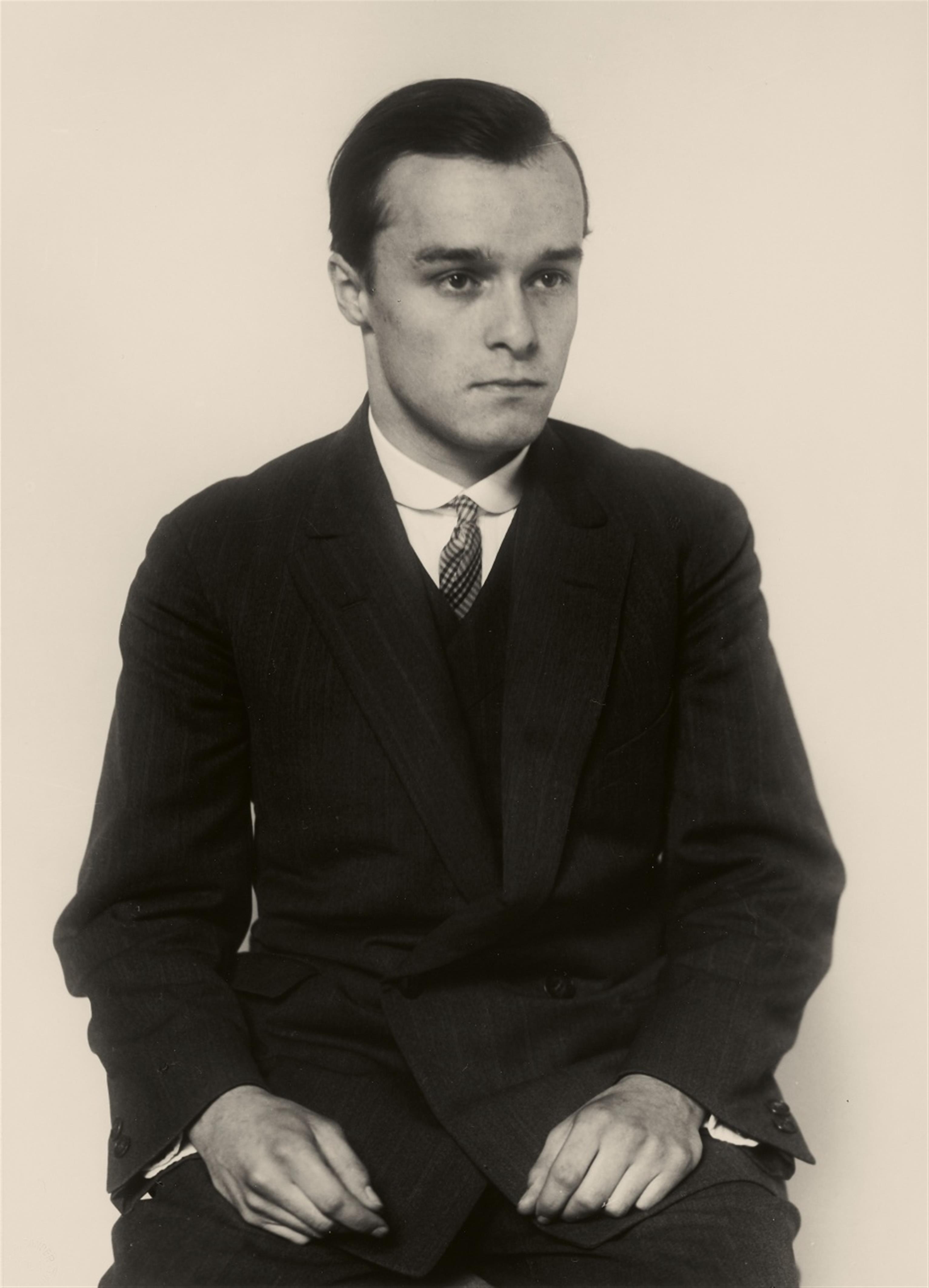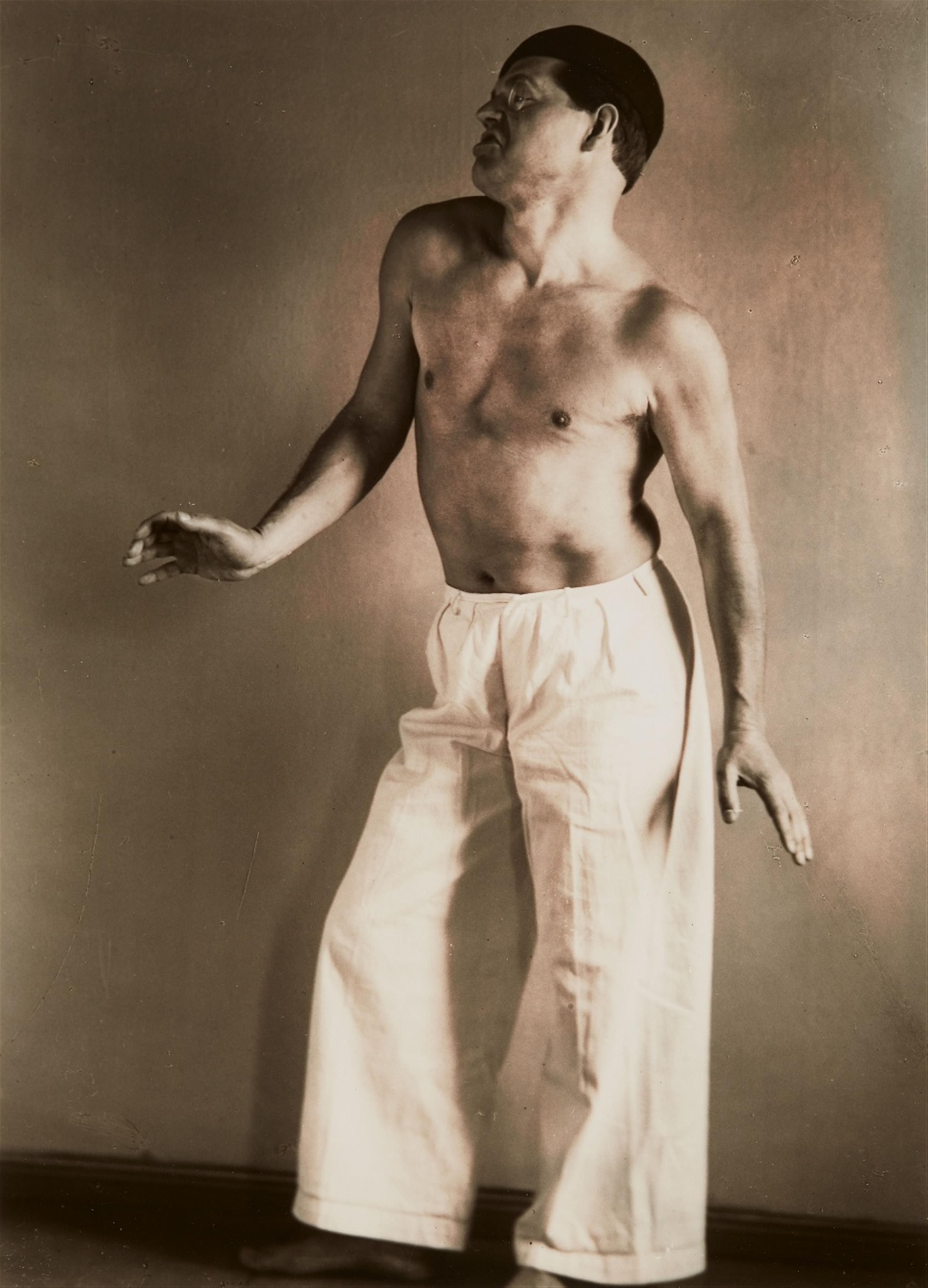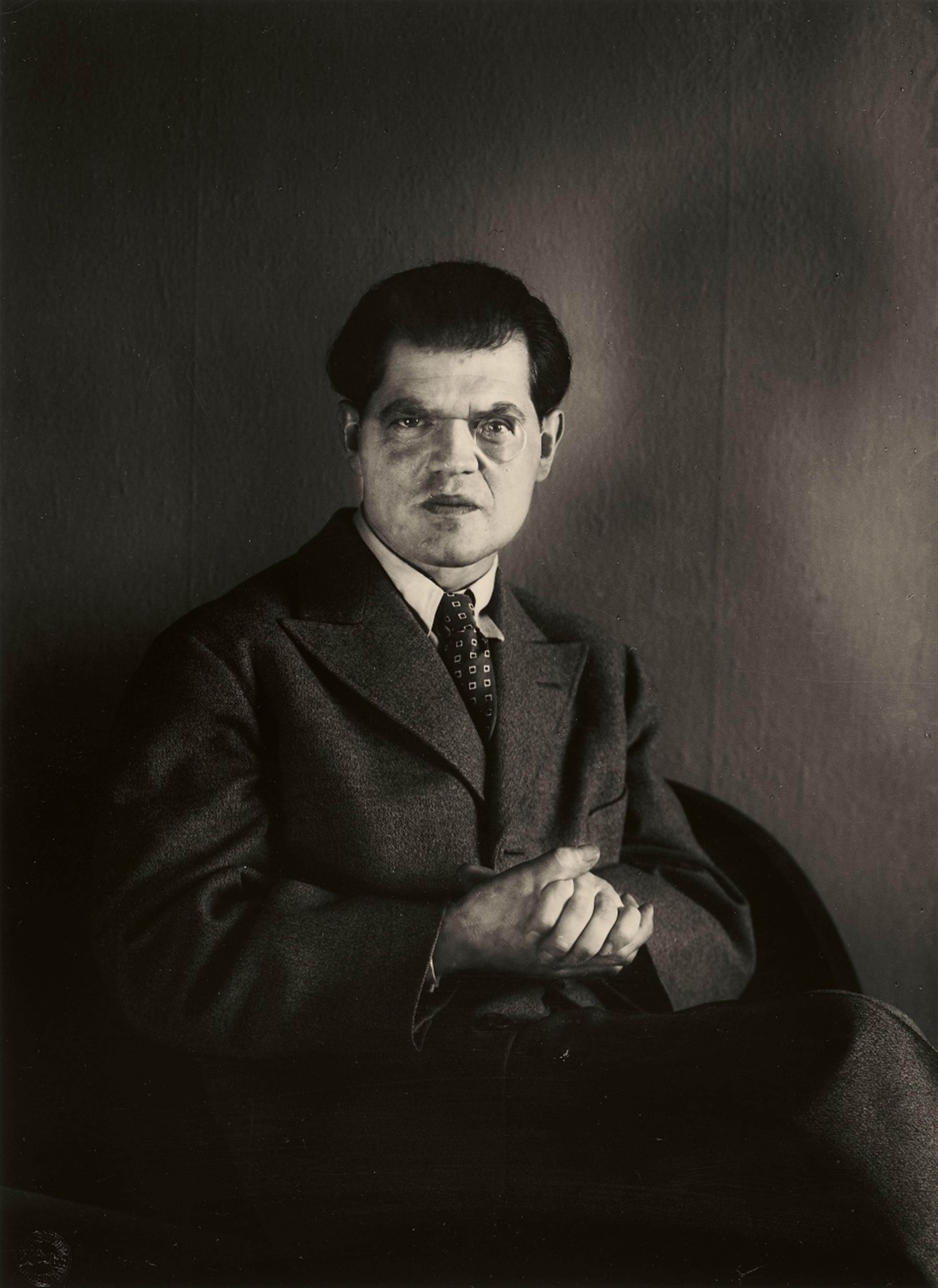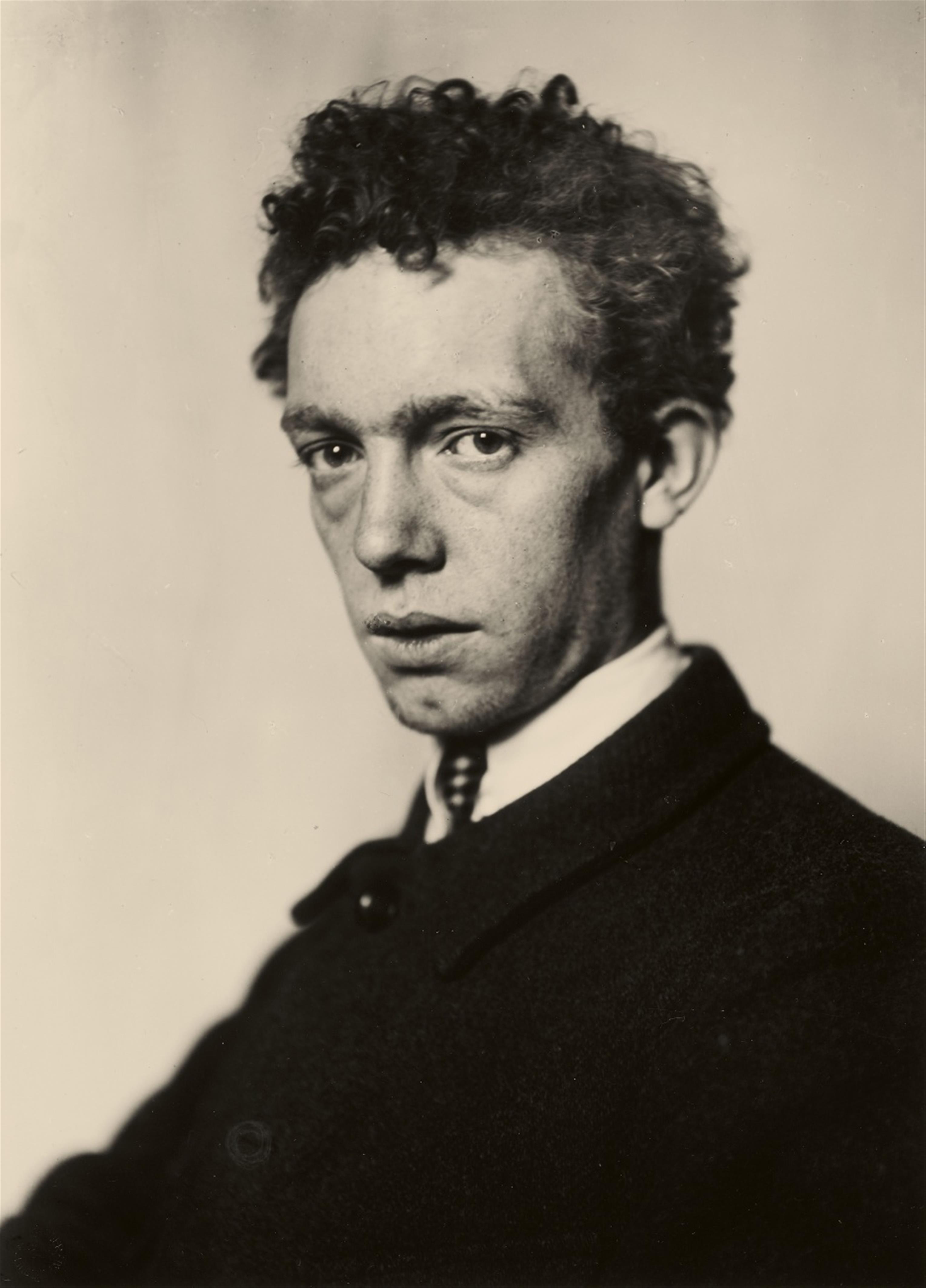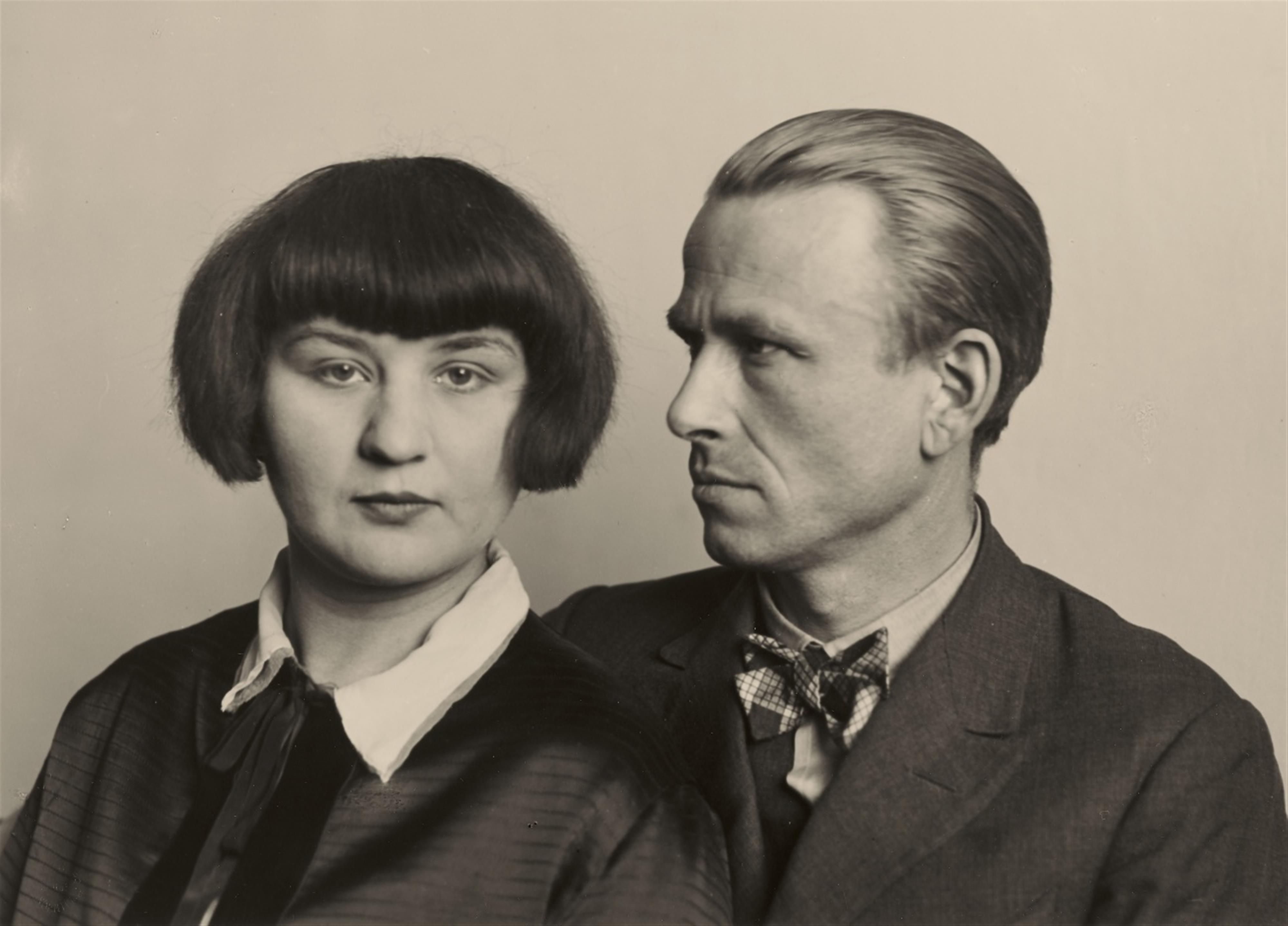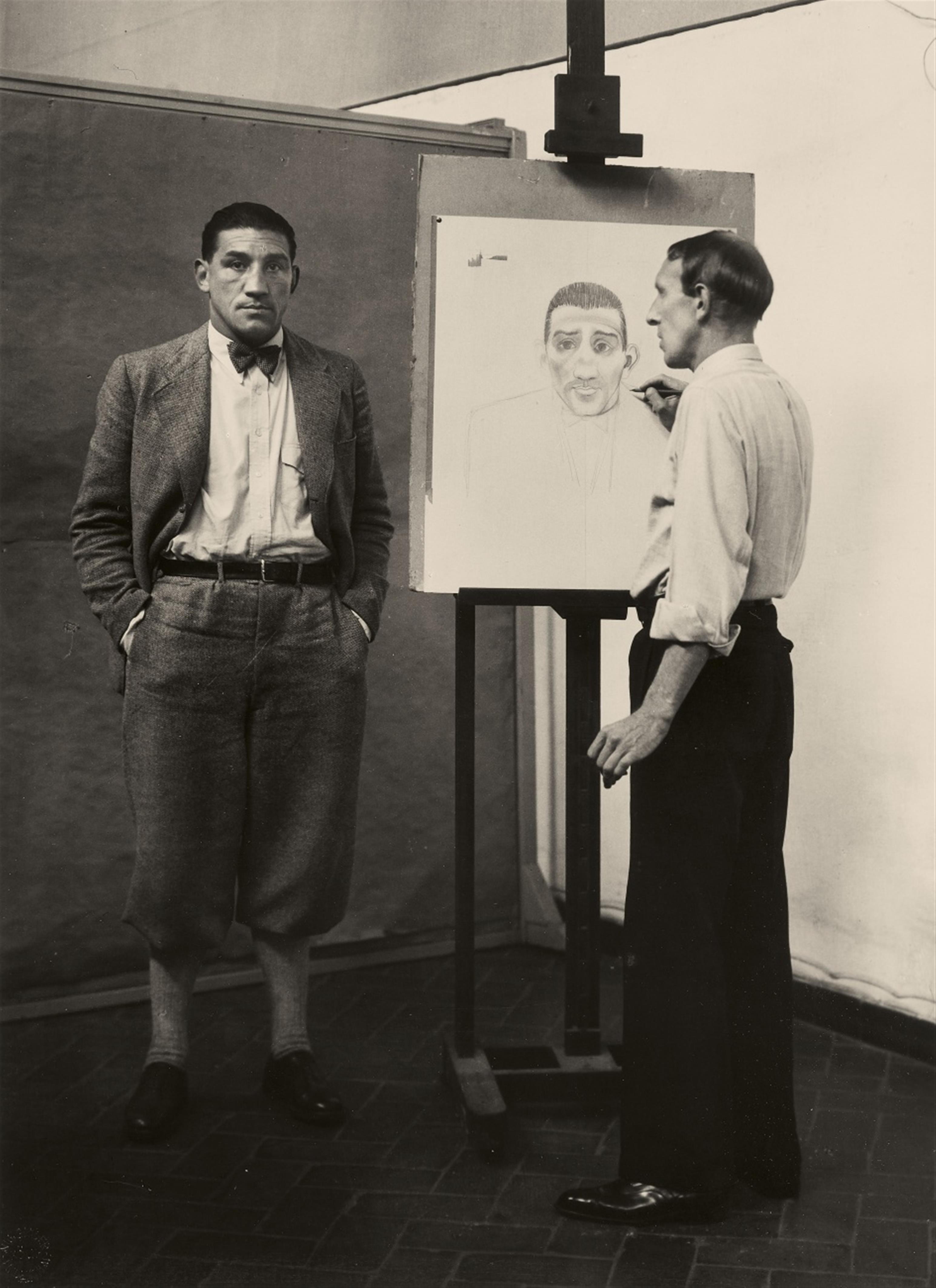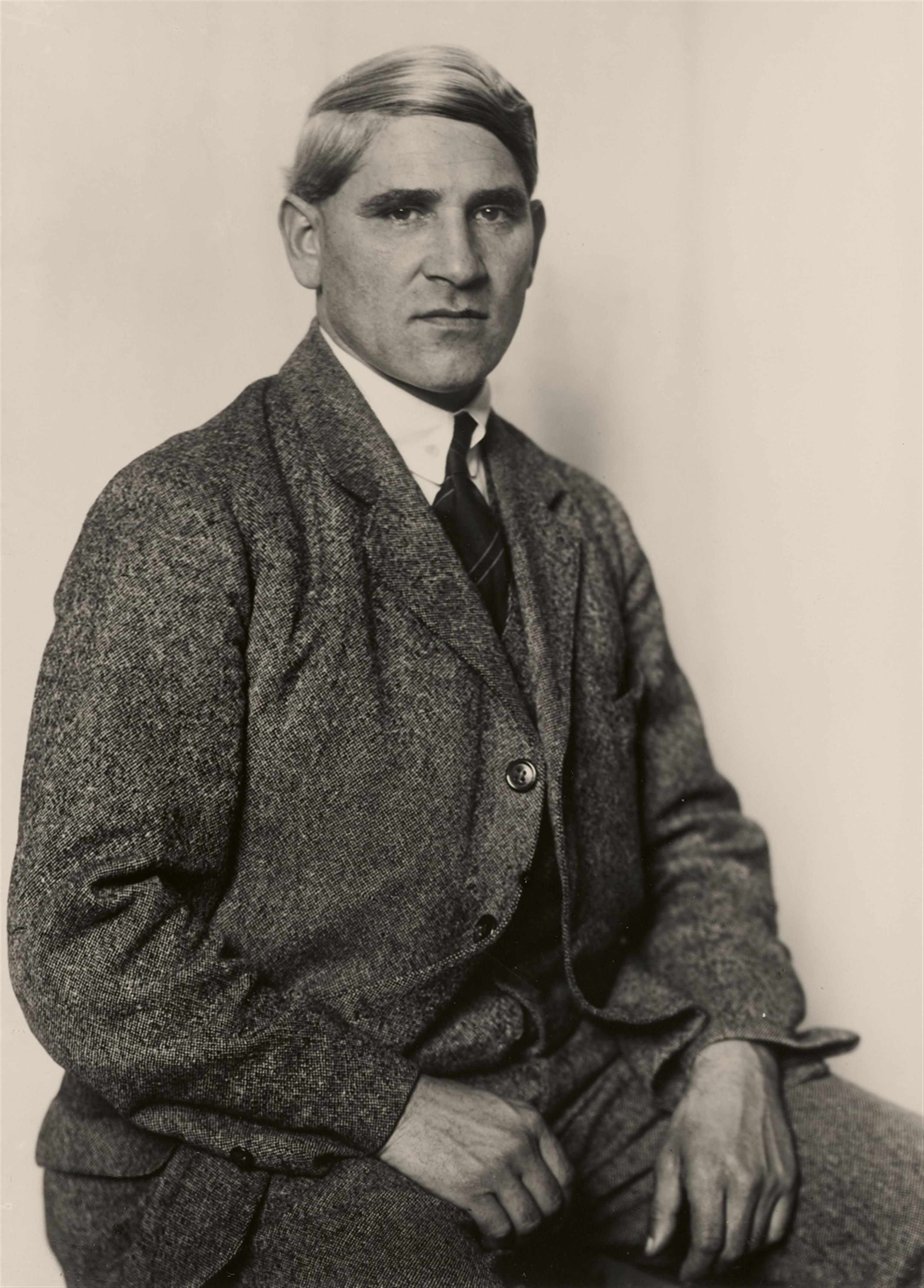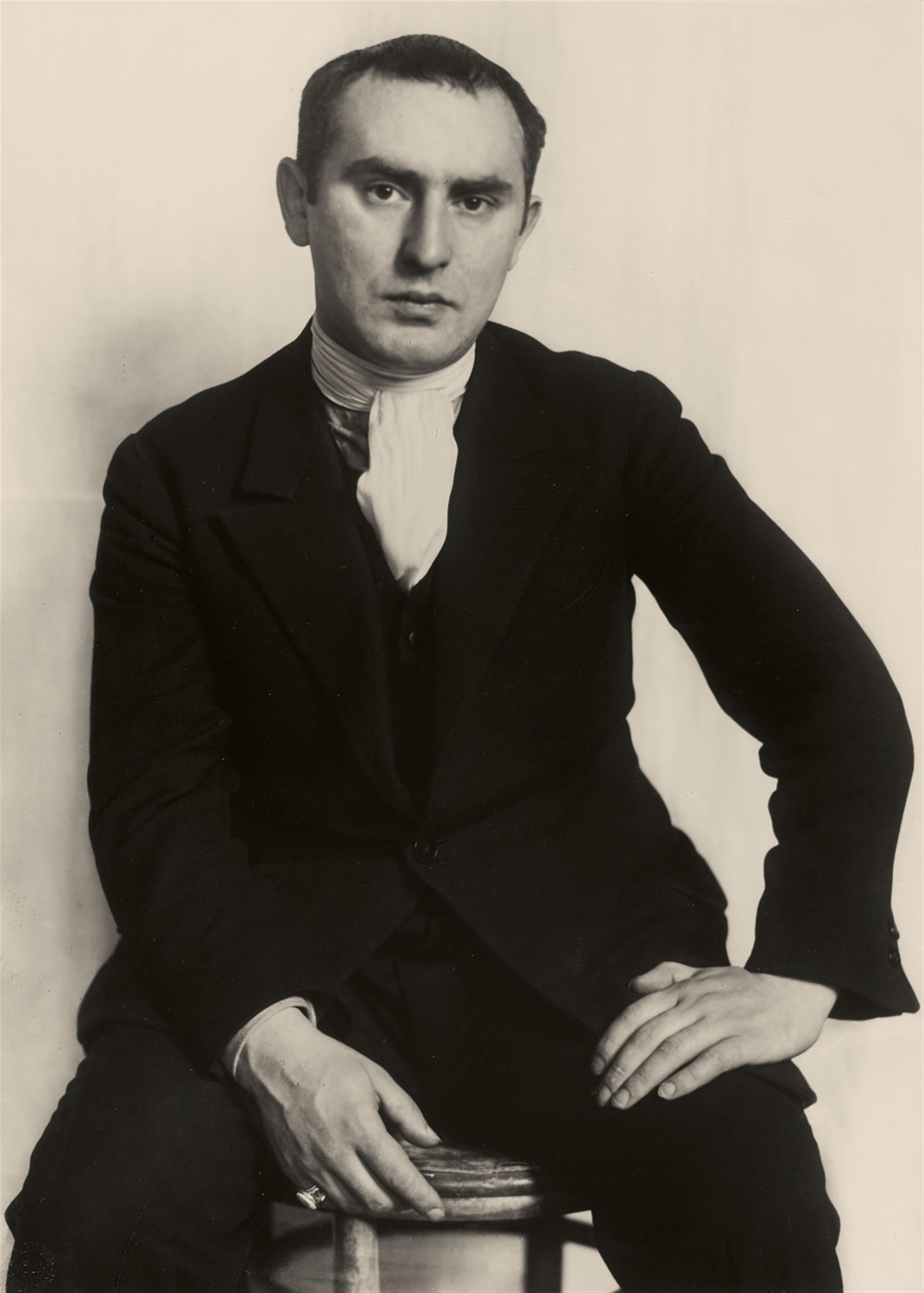August Sander
Künstlerportraits
1924-1930
Portfolio containing 12 gelatin silver prints, printed 1974 by Gunther Sander. Each print approx. 28.4 x 20.5 cm. The prints each with photographer's blindstamp lower left. Mounted individually under original mat and flushmounted to card, edition stamp, therein signed, dated and consecutively numbered '1' - '12' by Gunther Sander in pencil, on the reverse of the mounts. Together with flyleaf, thereon typewritten notes on the works, in original portfolio box. Print 53 from an edition of 75. Schirmer/Mosel edition, Munich.
Within 20th century photography, August Sander's œuvre occupies a prominent position. His monumental portrait work People of the 20th Century had already been enthusiastically received by contemporary critics, influenced several subsequent generations of photographers, and, due to its conceptual orientation, continues to have a lasting influence to this day.
In the mid-1920s, Sander embarked on the conception of his life project, which was based on the intention of revealing the social structures of his time by means of photographic portraits of people from the most diverse social levels and occupational groups. IIn accordance with the occupational profiles and social structures of the time, he divided his study into seven groups - 'Der Bauer', 'Der Handwerker', 'Die Frau', 'Die Stände', 'Die Künstler', 'Die Großstadt', and 'Die letzten Menschen' - which were to comprise a total of 45 portfolios. The fact that he did not, as would have been conceivable, integrate the artists into 'Die Stände' within his system, but dedicated a group of his own to them, illustrates the high value he attached to them within the social context. It can be assumed that it was Sander's personal environment that led to this emphasis, since he was in close, even friendly contact with many of the artists he portrayed. There was vigorous interaction concerning artistic and socio-political questions in particular with the artists of the Kölner Progessiven, including Wilhelm Seiwert, Heinrich Hoerle, Anton Räderscheidt, Otto Freundlich, and Gottfried Brockmann -discourses that found their expression not only in his own œuvre, but conversely also in that of the other painters.
The relationship to his artist friends was of central importance for Sander's conception of the People of the 20th Century to the extent that it was based on an artistic strategy such as was concurrently applied in the work of Seiwert, Hoerle, and Brockmann. The artists mentioned also created portfolios with which they strove to visually capture the social structure of the Weimar Republic in typifying representations. 'What they exemplarily realised in their works through the medium of graphics, was elevated by Sander to the general principle of his work, which he systematically divided into groups and portfolios and subjected to a typological orientation by means of photography'. (Susanne Lange/Gabriele Conrath-Scholl, in: Die Photographische Sammlung / SK Stiftung Kultur (ed.), loc.cit., p. 13).
This portfolio of prints, which August Sander's son Gunther compiled from the original negatives, combines not only some of the photographer's most famous portraits of artists. With a view to what has been said, it can also be interpreted as a retrospective appreciation of the mutual artistic exchange from which a photographic work finally emerged that is unique in the history of photography.
Provenance
Private property, Cologne
Literature
August Sander, Antlitz der Zeit. Sechzig Aufnahmen deutscher Menschen des 20. Jahrhunderts von August Sander, Berlin 1929 (Munich 1976), plate 50; Gunther Sander, August Sander. Menschen ohne Maske. Photographien 1906-1952, Munich 1976, with ill.; Die Photographische Sammlung/SK-Stiftung Kultur (ed.), Zeitgenossen. August Sander und die Kunstszene der 20er Jahre im Rheinland, exhib.cat. Josef-Haubrich-Kunsthalle, Köln i.a., Göttingen 2000, with ill.; Die Photographische Sammlung/SK-Stiftung Kultur (ed.), Menschen des 20. Jahrhunderts. Ein Kulturwerk in Lichtbildern eingeteilt in sieben Gruppen, Vol. 4: Die Stände, Munich 2002, with ill.; Die Photographische Sammlung/SK-Stiftung Kultur (ed.), Menschen des 20. Jahrhunderts. Ein Kulturwerk in Lichtbildern eingeteilt in sieben Gruppen, Vol. 5: Die Künstler, Munich 2002, with 1 ill.; Die Photographische Sammlung/SK-Stiftung Kultur (ed.), August Sander. Meisterwerke, Munich 2018, with ill.

